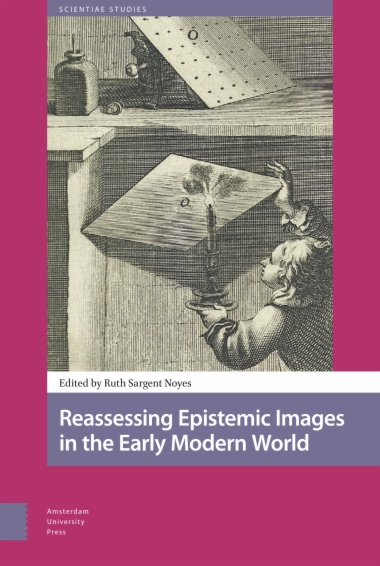This edited collection of papers explores from an interdisciplinary perspective the role of images and objects in early modern knowledge-making practices with an emphasis on mapping methodological approaches against printed pictures and things. The volume brings together work across diverse printed images, objects, and materials produced c. 1500-1700, as well as well as works in the ambit of early modern print culture, to reframe a comparative history of the rise of the ‘epistemic imprint’ as a new visual genre at the onset of the scientific revolution. The book includes contributions from the perspective of international scholars and museum professionals drawing on methodologies from a range of fields.
- Cover
- Table of Contents
- 1. Prologue
- For a Metaphorology of Engraving: From Epistemic Images to an Imaged Epistemology
- 2. Introduction
- Pittura filosofica: Etching Galileo’s Sunspots and the Discursive Field of Early Modern Epistemic Images
- Part 1. Approaches to Print Matrices
- 3. Sequencing Vesalius’s De Humani Corporis Fabrica
- Dániel Margócsy, Mark Somos, and Stephen N. Joffe
- 4. Meticulous Matrices: Building a Chronology of Albrecht Dürer’s Meisterstiche Impressions through the Analysis and Documentation of Microscopic Scratches in His Engraved Plates
- 5. Digital Resuscitation of the Officina Plantiniana’s Woodblock Collection: Goals, Approaches, and Results
- Part 2. Imprints as Instruments
- 6. Academic Print Practices in the Southern Netherlands: Allegory and Emblematics as Epistemic Tools
- 7. Visual Worlds on Early Modern Scientific Instruments: Types and Messages
- Julia Ellinghaus and Volker R. Remmert
- 8. Visual Tools and Searchable Science in Early Modern Books
- Britta-Juliane Kruse and Stephanie Leitch
- Part 3. Imprint, Knowledge, and Affect
- 9. The Hydraulics of the Soul: Jacobus Meilingius’s Allegorical Schemata
- 10. Images of the Eye from Vesalius to Fabricius ab Aquapendente
- The Rise of Metrical Representation in Anatomical Diagrams and the Cross-Fertilization of Visual Traditions
- 11. Illustrating the Vernacular Body: Juan Valverde de Amusco and the Art of Embodied Anatomy
- 12. Epilogue
- Bibliography
- Index

